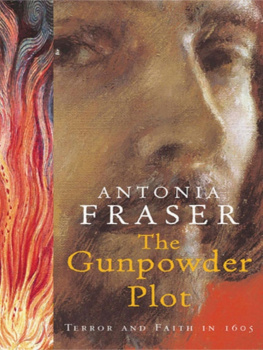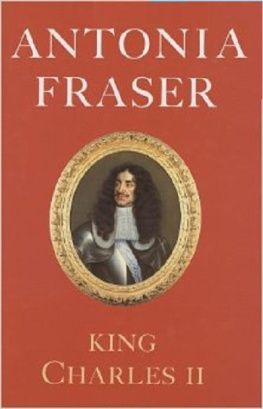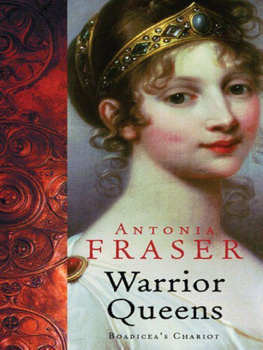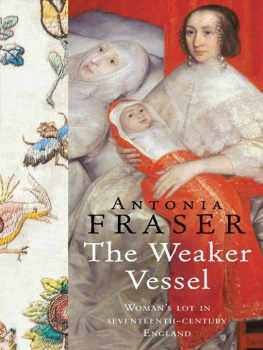Antonia Fraser - The Gunpowder Plot: Terror and Faith in 1605
Here you can read online Antonia Fraser - The Gunpowder Plot: Terror and Faith in 1605 full text of the book (entire story) in english for free. Download pdf and epub, get meaning, cover and reviews about this ebook. year: 2010, publisher: Hachette UK, genre: Non-fiction. Description of the work, (preface) as well as reviews are available. Best literature library LitArk.com created for fans of good reading and offers a wide selection of genres:
Romance novel
Science fiction
Adventure
Detective
Science
History
Home and family
Prose
Art
Politics
Computer
Non-fiction
Religion
Business
Children
Humor
Choose a favorite category and find really read worthwhile books. Enjoy immersion in the world of imagination, feel the emotions of the characters or learn something new for yourself, make an fascinating discovery.
- Book:The Gunpowder Plot: Terror and Faith in 1605
- Author:
- Publisher:Hachette UK
- Genre:
- Year:2010
- Rating:3 / 5
- Favourites:Add to favourites
- Your mark:
- 60
- 1
- 2
- 3
- 4
- 5
The Gunpowder Plot: Terror and Faith in 1605: summary, description and annotation
We offer to read an annotation, description, summary or preface (depends on what the author of the book "The Gunpowder Plot: Terror and Faith in 1605" wrote himself). If you haven't found the necessary information about the book — write in the comments, we will try to find it.
The Gunpowder Plot: Terror and Faith in 1605 — read online for free the complete book (whole text) full work
Below is the text of the book, divided by pages. System saving the place of the last page read, allows you to conveniently read the book "The Gunpowder Plot: Terror and Faith in 1605" online for free, without having to search again every time where you left off. Put a bookmark, and you can go to the page where you finished reading at any time.
Font size:
Interval:
Bookmark:
Antonia Fraser has written an excellent book which unravels the whole story of the plot, exploring the background, keeping close to the evidence, and, above all, bringing the characters to life a judicious and very readable account
Hugh Trevor-Roper, Literary Review
Every few years a work of history appears that succeeds in connecting its subject to the deeper questions troubling modern society. This is one such book
Amanda Foreman, Independent
It has a fine narrative flow, for Antonia Fraser recognises that history is essentially a story, and a gripping one at that. She writes with verve and imagination
Kenneth Baker, Daily Telegraph
Frasers meticulously researched book is an excellent read Antonia Fraser has shed much light on one of the most controversial episodes in English history
Martin Jacques, Observer
The Gunpowder Plot
Terror & Faith in 1605

ANTONIA FRASER
History to the defeated
May say Alas but cannot help nor pardon
W. H. AUDEN , Spain, 1937

FOR
Edward who would have defended them
Lucy who would have hidden them
Paloma who would have succoured them in exile
Contents






That heavy and doleful tragedy which is commonly called the Powder Treason: thus Sir Edward Coke, as prosecuting counsel, described the Gunpowder Plot of 1605. It is a fair description of one of the most memorable events in English history, which is celebrated annually in that chant of Remember, remember the Fifth of November. But who was the Gunpowder Plot a tragedy for? For King and Royal Family, for Parliament, all threatened with extinction by terrorist explosion? Or for the reckless Catholic conspirators and the entire Catholic community, including priests, whose fate was bound up with theirs? In part, this book attempts to answer that question.
Its primary purpose is, however, to explain, so far as is possible in view of imperfect records and testimonies taken under torture, why there was a Gunpowder Plot in the first place. The complicated details of this extraordinary episode resemble those of a detective story (including an anonymous letter delivered under cover of darkness), and, as in all mysteries, the underlying motivation is at the heart of the matter.
Obviously, to talk of providing an explanation begs the question of whether there really was a Plot. Over the years over the centuries dedicated scholars and historians have divided into two categories on the subject. I have lightly designated these Pro-Plotters those who believe firmly in the Plots existence and No-Plotters those who believe equally firmly that the Plot was a fabrication on the part of the government. My own position, as will be seen, does not fall precisely into either of these categories. I believe that there was indeed a Gunpowder Plot: but it was a very different Powder Treason from that conspiracy outlined by Sir Edward Coke.
By accepting that there was a Plot, I have also accepted that the conspirators were what we would now term terrorists. Certainly, the questionable moral basis for terrorism can violence ever be justified whatever the persecution, whatever the provocation? is a theme which runs through my narrative. And there is an additional problem: is terrorism justified only when it is successful? These are awkward questions, but for that reason, if no other, worth the asking.
Writers on the subject of the Plot have, naturally enough, tended to draw their own contemporary comparisons. A student of Catesby family history in 1909 referred to these days of [Russian] Anarchist plots as providing a suitable background for Catesbys own conspiratorial activities. Donald Carswell, a barrister who edited The Trial of Guy Fawkes in 1934, likened the Gunpowder Plot to the Reichstag Fire of February 1933: it turned out to be first-class government propaganda, enabling the Nazis to suppress the Communists, as the Catholics had been suppressed after 1605.
Graham Greene, providing an introduction in 1968 to the memoirs of Kim Philby, the Briton who spied for Stalins Russia, compared Philbys Communist faith his chilling certainty in the correctness of his judgment to that of the English recusant Catholics, supporting Spain and its Inquisition. Elliot Rose, in Cases of Conscience, published in 1975, the year in which the Vietnam War ended, drew a parallel between Catholics who refused to conform in the reign of Elizabeth and James I, and protesters against the Vietnam War. More recently, Gary Wills in Witches and Jesuits: Shakespeares Macbeth (1995) evoked the turbulent conspiratorial atmosphere in the United States after the assassination of President Kennedy to explain the world in which the play first appeared. (First performed in 1606, the text of Macbeth is darkened by the shadow of the Gunpowder Plot.) Certainly, the events of 5 November 1605 have much in common with the killing of President Kennedy as a topic which is, in conspiratorial terms, eternally debatable.
It is appropriate, therefore, that in my case a book written towards the end of the twentieth century should be concerned with the issue of terrorism. This is an issue, for better or for worse, which has to be considered in order to understand the unfolding histories of Northern Ireland and Israel/Palestine to take only two possible examples. Meanwhile we have a phenomenon in which a number of todays world leaders have in the past been involved on their own recognition in terrorist activities and have morally justified them on grounds of national or religious interest. It is for this reason I have given my book the subtitle of Terror and Faith in 1605.
One should, however, bear in mind that the word terror can refer to two different kinds. There is the terror of partisans, of freedom fighters, or of any other guerrilla group, carried out for the higher good of their objectives. Then there is the terror of governments, directed towards dissident minorities. The problem of subjects who differ from their rulers in religion (have they the moral right to differ?) is one that runs throughout this book.
There is a similar contemporary relevance of a very different sort in the stories of the various Catholic women who found themselves featuring in the subterranean world of the Gunpowder Plot. At a time when womens role in the Christian Churches, especially the Catholic Church, is under debate, I was both interested and attracted by the role played by these strong, devout, courageous women. At the time Catholic priests compared them to the holy women of the Bible who followed Jesus Christ. Some were married with the responsibilities of families in a dangerous age; others chose the single path with equal bravery. Ironically enough, it was the perceived weakness of women which enabled them to protect the forbidden priests where others could not do so. Circumstances gave them power; they used it well.
Next pageFont size:
Interval:
Bookmark:
Similar books «The Gunpowder Plot: Terror and Faith in 1605»
Look at similar books to The Gunpowder Plot: Terror and Faith in 1605. We have selected literature similar in name and meaning in the hope of providing readers with more options to find new, interesting, not yet read works.
Discussion, reviews of the book The Gunpowder Plot: Terror and Faith in 1605 and just readers' own opinions. Leave your comments, write what you think about the work, its meaning or the main characters. Specify what exactly you liked and what you didn't like, and why you think so.









